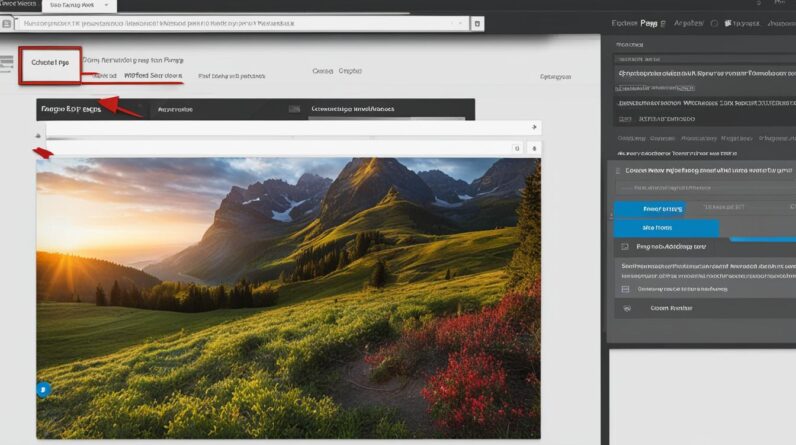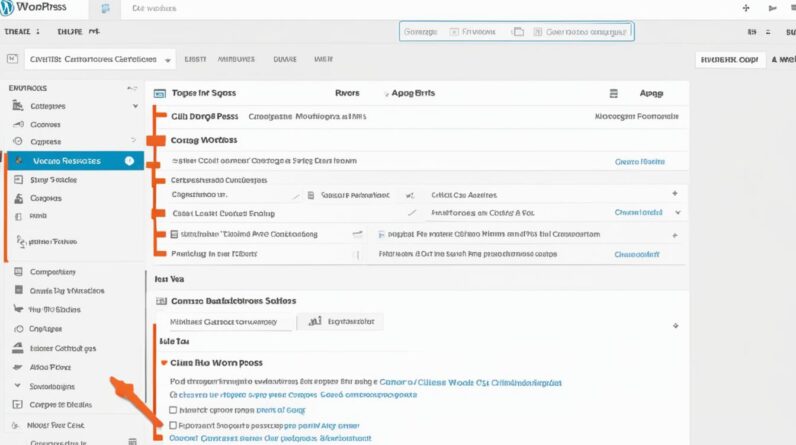Hello, I’m here to share a valuable tip that will help you retrieve WordPress post titles quickly and efficiently. Whether you’re a web developer or someone managing a WordPress site, this information will streamline your workflow and save you time. So, let’s dive in and discover how to get post titles in WordPress with ease!
How to Make Money with YouTube
Create an empire of automated video websites for multiple streams of income
In WordPress, there is a handy built-in function called get_the_title() that allows you to retrieve post titles effortlessly. This function is versatile and can handle various scenarios, including when posts are protected or private. It automatically adds the labels “Protected” or “Private” before the post title, providing a comprehensive solution for your needs.
When using get_the_title(), you have the option to pass the post ID or WP_Post object as an optional parameter. The function will then return the post title as a string. This flexibility allows you to seamlessly integrate it into your custom loops or themes, making it a go-to choice for web development workflows.
Key Takeaways:
- Retrieve post titles quickly in WordPress using the get_the_title() function.
- Pass the post ID or WP_Post object as an optional parameter to retrieve specific post titles.
- The get_the_title() function works seamlessly with custom loops and themes.
- It automatically handles protected and private posts by adding appropriate labels before the post title.
- By using get_the_title(), you have more control over manipulating the title string if needed.
Understanding the get_the_title() Function
The get_the_title() function in WordPress is an essential tool for developers looking to retrieve the title of a post or page. With its versatility and flexibility, this PHP function simplifies the process of accessing and displaying post titles throughout a WordPress site.
When called without any arguments, get_the_title() automatically retrieves the title of the current post. This is particularly useful when you want to display the title within the context of the active page or post. However, the function can also accept parameters, such as a specific post ID or WP_Post object, to retrieve the title of a targeted post.
Custom themes and code snippets benefit greatly from get_the_title(). You can leverage this function to display post titles in various areas of your WordPress site, giving your users a seamless browsing experience. Whether you’re building a custom loop or designing a unique theme, get_the_title() offers the flexibility you need to access and incorporate post titles exactly where you want them.
With the get_the_title() function, you can effortlessly access post titles, unlocking the potential for a more dynamic and personalized user interface. By embracing this powerful WordPress feature, you can optimize your site’s functionality and enhance the overall user experience.
Why Use get_the_title() Function?
There are several compelling reasons to utilize the get_the_title() function in your WordPress projects:
- Efficiency: The function quickly and accurately retrieves post titles, allowing for streamlined development and improved performance. It ensures that your site’s titles are always up-to-date and displayed correctly.
- Flexibility: With the ability to retrieve titles for specific posts, get_the_title() offers unparalleled flexibility. You can incorporate post titles into various sections of your site, tailoring the user experience to suit your unique design and content needs.
- Customization: By retrieving post titles with get_the_title(), you have full control over how they are displayed. You can modify and manipulate the title strings as needed, ensuring they seamlessly integrate with your website’s overall look and feel.
How to Use get_the_title() Function
Using the get_the_title() function is straightforward. Simply call the function and store the result in a variable, allowing you to manipulate it further or display it directly on your site:
<?php
$post_title = get_the_title();
echo $post_title;
?>Alternatively, if you want to retrieve the title for a specific post, you can pass the post ID as an argument:
<?php
$specific_post_id = 123; // Replace 123 with your desired post ID
$post_title = get_the_title($specific_post_id);
echo $post_title;
?>By including get_the_title() in your WordPress development workflow, you can efficiently retrieve post titles and enhance the overall functionality and user experience of your website.
Displaying Post Titles in WordPress
To display a post title in WordPress, you can simply call the get_the_title() function and echo the result. This will output the title of the current post.
If you want to display the title of a specific post, you can pass the post ID as an argument to the function. For example, echo get_the_title(123); will retrieve and display the title of the post with ID 123.
Additionally, the the_title() function can be used to automatically echo the title. This allows you to add content before or after the title. For example:
<h1>Before Title</h1>
<?php the_title(); ?>
<h2>After Title</h2>
It is recommended to use the get_the_title() function for more flexibility in modifying the title string if needed. This allows you to manipulate the title before echoing it, such as adding HTML tags or formatting the text according to your requirements.
By using the get_the_title() function and understanding how to pass arguments or utilize other functions like the_title(), you can easily display post titles in WordPress and customize their presentation according to your design needs.
Handling Protected and Private Posts
When working with protected and private posts in WordPress, the get_the_title() function ensures that the correct labels are displayed before the post title. For password-protected posts, the function uses the protected_title_format filter to prepend “Protected” to the title. Similarly, for private posts, the private_title_format filter is used to prepend “Private” to the title.
This functionality guarantees that visitors can easily identify protected and private posts by the labels displayed before the post title.
Let’s take a look at an example:
| Post Title | Display |
|---|---|
| My Protected Post | Protected: My Protected Post |
| My Private Post | Private: My Private Post |
As you can see in the table above, the get_the_title() function adds the appropriate labels for protected and private posts, enhancing the user experience and providing clear indications of post visibility status.
Key Takeaways:
- The
get_the_title()function in WordPress handles protected and private posts. - The function uses the
protected_title_formatfilter for password-protected posts. - The
private_title_formatfilter is used for private posts. - The correct labels are added before the post title to clearly indicate post visibility status.
Using get_the_title() in Custom Loops
When it comes to developing custom functionality in WordPress, such as custom loops, the get_the_title() function becomes an invaluable tool. By specifying the post ID within the function, I can easily retrieve the title of a specific post within my custom loops, granting me the flexibility to display post titles according to the unique requirements of my project.
Unlike the_title() function, which automatically echoes the post title, get_the_title() allows me to have greater control over the title string. This gives me the freedom to manipulate and format the title as needed, ensuring a seamless integration with the rest of my custom loop display.
Whether I need to include additional HTML tags, modify the title’s formatting, or incorporate it into a specific layout, get_the_title() empowers me to achieve my desired result. This customizability makes it the preferred choice for developers working with custom loops in WordPress.
https://www.youtube.com/watch?v=nm6wOhx0HIo
In my experience, using get_the_title() in custom loops not only enhances the overall look and feel of my WordPress projects but also streamlines the development process. With this function, I can easily retrieve and display post titles with precision, eliminating the need for cumbersome workarounds.
Example: Get the Post Title in a Custom Loop
To illustrate how powerful get_the_title() is in custom loops, let’s consider the following example:
| Post ID | Post Title |
|---|---|
| 1 | |
| 2 | |
| 3 |
In the example above, I’ve used get_the_title() within a custom loop to retrieve and display the titles of three specific posts. By passing the respective post IDs as arguments, I can fetch the corresponding titles and seamlessly integrate them into my custom loop output.
By leveraging the power of get_the_title() in custom loops, I can create dynamic and personalized WordPress solutions that meet the unique needs of my projects.
Other Functions for Title Manipulation
In addition to the get_the_title() function, WordPress provides other useful functions for manipulating post titles. These functions offer different ways to handle and display titles, allowing developers to customize the output according to their specific needs.
The_title() Function
The the_title() function is another built-in function in WordPress that can be used to automatically echo the post title. This function is commonly used when developers want to include additional content before or after the post title.
For example, let’s say you want to add a bullet point before the post title in a list. You can use the the_title() function like this:
<ul>
<li>Post title: <?php the_title(); ?></li>
</ul>
This will produce a bullet-point list where each item includes the post title.
The_title_attribute() Function
The the_title_attribute() function is another valuable function that comes in handy when using the post title as an HTML attribute, such as a title tag. It echoes a sanitized version of the post title, ensuring that any special characters are appropriately encoded to prevent layout-breaking issues.
For example, if you’d like to use the post title as a tooltip for an image, you can use the the_title_attribute() function like this:
<img src="image.jpg" alt="Image" title="<?php the_title_attribute(); ?>">
This will generate an image with the post title as a tooltip when a user hovers over it.
While the_title() and the_title_attribute() functions offer convenience in certain situations, it is generally recommended to continue using the get_the_title() function for more flexibility in manipulating the post title string.
Proceed to Section 7 to learn more about retrieving post titles in a WordPress environment.
Retrieving Post Titles in a WordPress Environment
In WordPress, retrieving post titles can be easily done using the get_the_title() function. This function has a simple syntax and offers flexibility in retrieving post titles for specific posts. To use the get_the_title() function, you have two options for the parameter: an integer representing the post ID or a WP_Post object.
If you provide a specific post ID or object as the parameter, the get_the_title() function will retrieve the title of the corresponding post. For example:
echo get_the_title(5);
This code will retrieve and display the title of the post with ID 5. This is useful when you want to retrieve a specific post title outside of the current loop or in a custom loop.
On the other hand, if you don’t provide any argument, the get_the_title() function will retrieve the title of the current queried object. It relies on the global $post variable, which holds the current post’s information. This is handy when you want to retrieve the title of the current post without specifying the ID.
Resetting the Global $post Variable in Custom Loops
When using the get_the_title() function within custom loops, it’s important to reset the global $post variable to avoid conflicts. This can be done using the wp_reset_postdata() function. By resetting the $post variable, you ensure that the get_the_title() function fetches the correct title for each iteration of the loop.
Here’s an example of how to use get_the_title() in a custom loop:
'post',
'posts_per_page' => 5
);
$custom_query = new WP_Query($args);
if ($custom_query->have_posts()) {
while ($custom_query->have_posts()) {
$custom_query->the_post();
echo get_the_title();
}
wp_reset_postdata();
}
?>
The code above retrieves and displays the titles of the 5 latest posts in a custom loop. The get_the_title() function is used within the loop to retrieve the title of each post dynamically.
Summary:
The get_the_title() function in WordPress provides a simple and efficient way to retrieve post titles. By understanding the syntax and how to use it within custom loops, you can easily incorporate this function into your WordPress development workflow to efficiently retrieve and display post titles.
Passing an ID to get_the_title() Function
When working with WordPress, there may be instances where you want to retrieve the title of a specific post. This can be achieved by passing the post ID as an argument to the get_the_title() function. By specifying the desired post ID, you can retrieve and display the title of that specific post. Let’s take a look at an example:
<?php
echo get_the_title(5);
?>
In the above example, the echo get_the_title(5) statement retrieves and displays the title of the post with the ID 5. You can replace the value inside the parentheses with the desired post ID to retrieve the corresponding title.
Using the get_the_title() function with a specific post ID allows you to display the title of a post outside of the current loop or even within a custom loop. This provides you with the flexibility to showcase post titles wherever necessary in your WordPress site.
To further enhance your understanding, let’s take a look at an example table displaying different post IDs and their corresponding titles:
| Post ID | Post Title |
|---|---|
| 1 | This is the Title of Post 1 |
| 2 | Another Amazing Post Title |
| 3 | Hello World! |
By using the get_the_title() function with the respective post IDs, you can retrieve the corresponding post titles and display them dynamically on your website. Remember to replace the post ID in the function call with the desired value to fetch the appropriate title.

Using get_the_title() in a Loop
When working with multiple posts in a loop, you can utilize the get_the_title() function to retrieve and display the titles of each post. This is particularly useful when creating dynamic content that requires accessing the title of each post individually.
To implement this, you can start by looping through the posts using functions like WP_Query(). Within the loop, you can use the get_the_title() function to retrieve the title of each post and use it in your desired output. This allows you to display the post titles dynamically, providing a more engaging and personalized user experience.
Here is an example of how you can use get_the_title() in a loop:
<?php
// Create a new WP_Query instance
$query = new WP_Query( array( 'post_type' => 'post' ) );
// Check if there are any posts
if ( $query->have_posts() ) {
while ( $query->have_posts() ) {
$query->the_post();
$post_title = get_the_title();
echo '<h3>' . $post_title . '</h3>';
}
}
// Reset the global $post variable
wp_reset_postdata();
?>
In the example above, we first create a WP_Query instance to retrieve all posts. Inside the loop, we call the get_the_title() function to get the title of each post, store it in a variable called $post_title, and then use it to echo the post title within an <h3> tag.
Remember to use the wp_reset_postdata() function after the loop to reset the global $post variable and avoid any conflicts with other queries or loops in your WordPress environment. This ensures that your subsequent code does not reference the last post from the loop unintentionally.
By utilizing get_the_title() in a loop, you can easily access and display the titles of multiple posts, providing a dynamic and tailored experience for your website visitors.
Conclusion
In conclusion, the get_the_title() function in WordPress provides an efficient and flexible way to retrieve and display post titles. Whether you need to retrieve titles for specific posts, handle protected and private post titles, or manipulate titles within custom loops, this function has got you covered. By incorporating get_the_title() into your web development workflow, you can optimize the retrieval process and ensure efficient display of post titles.
Understanding the syntax and functionality of get_the_title() allows developers to streamline their WordPress projects and enhance user experience. By leveraging the power of this function, you can efficiently retrieve and display post titles, providing visitors with clear and relevant information.
Next time you’re working on a WordPress website, remember to utilize the get_the_title() function for efficient post title retrieval. With its versatility and ease of use, you can optimize your workflow and enhance the overall user experience of your website. So go ahead and make the most of this powerful function in your web development endeavors!
FAQ
How can I retrieve post titles in WordPress?
The get_the_title() function can be used to retrieve post titles efficiently. It accepts the post ID or WP_Post object as an optional parameter and returns the post title as a string.
Can I use get_the_title() to display the title of a specific post?
Yes, you can pass the post ID as an argument to the get_the_title() function to retrieve the title of a specific post.
What happens if a post is protected or private?
The get_the_title() function handles protected and private posts by adding “Protected” or “Private” before the post title, respectively.
Are there other functions for manipulating post titles?
Yes, functions like the_title() and the_title_attribute() can be used for automatically echoing titles and manipulating them for specific purposes.
What is the syntax for using get_the_title() in WordPress?
The get_the_title() function accepts an optional parameter of the post ID or WP_Post object. When no argument is given, it retrieves the title of the current queried object using the global $post variable.
How can I retrieve the title of a specific post using get_the_title()?
You can pass the post ID as an argument to the get_the_title() function. For example, echo get_the_title(5) would retrieve and display the title of the post with ID 5.
How can I use get_the_title() in a loop?
You can use get_the_title() within a loop to retrieve and display the titles of each post dynamically. After the loop, remember to reset the global $post variable using wp_reset_postdata().






